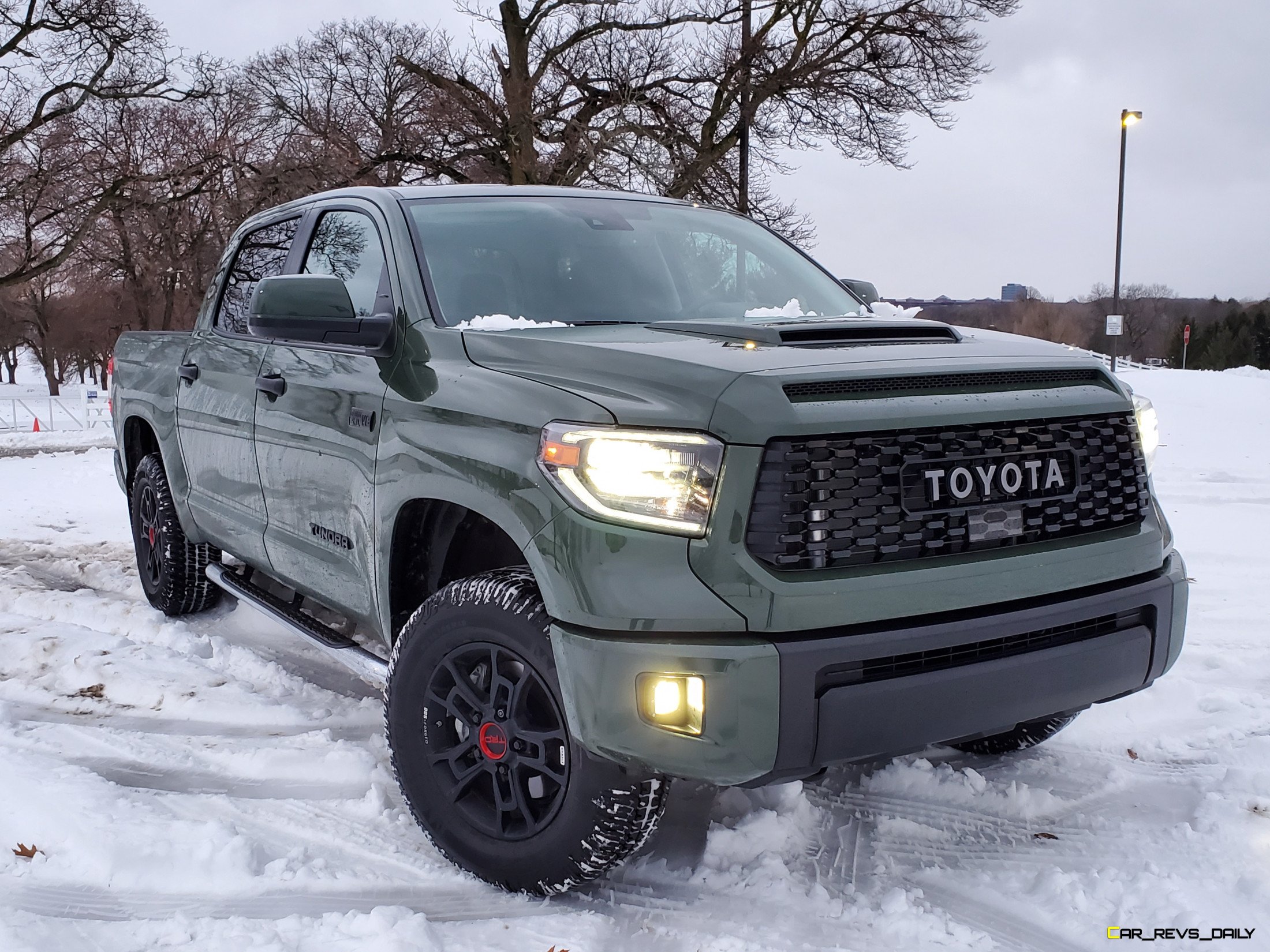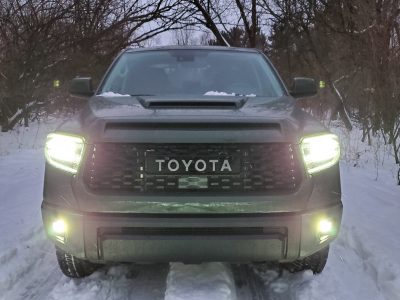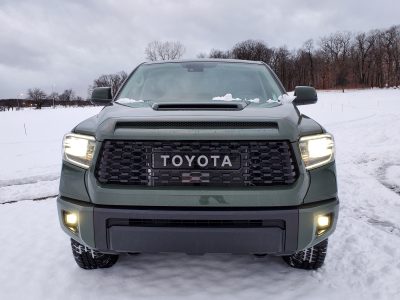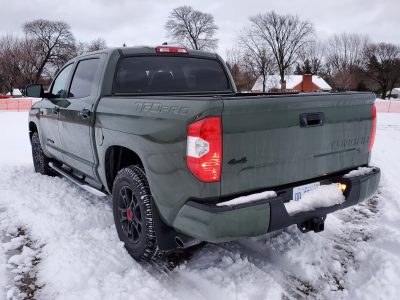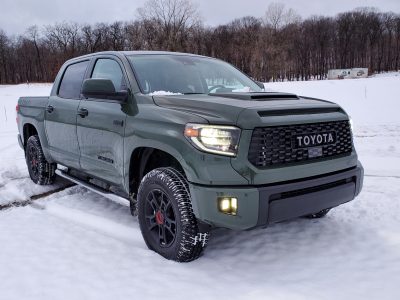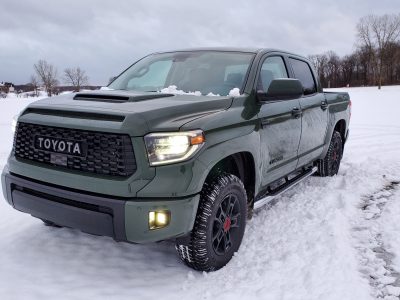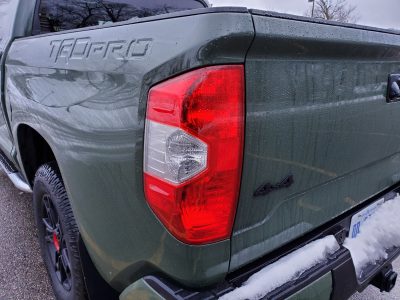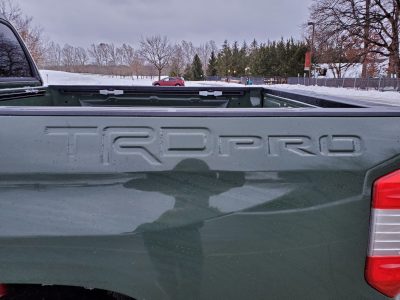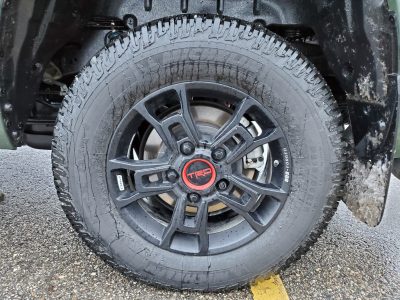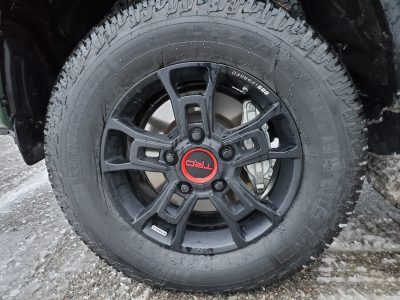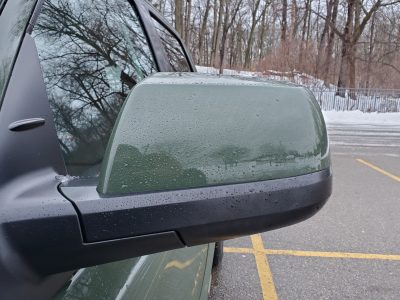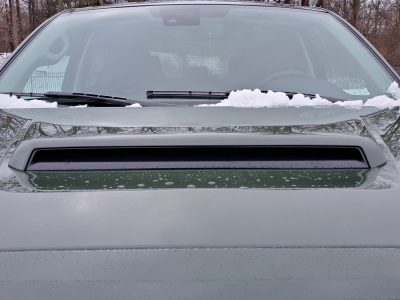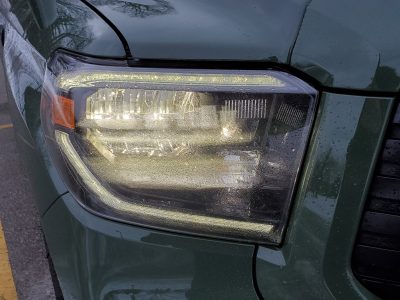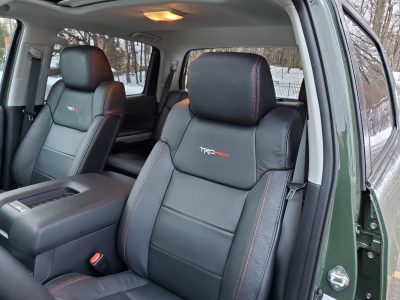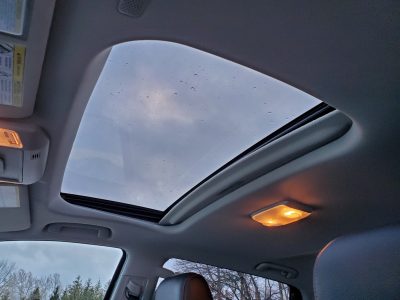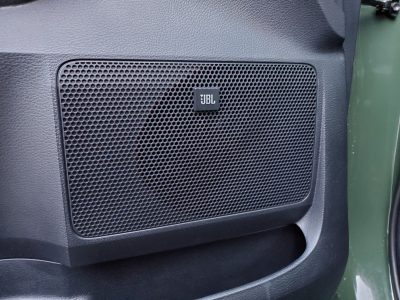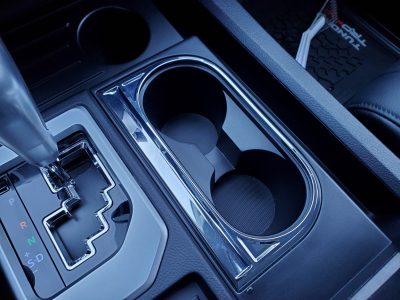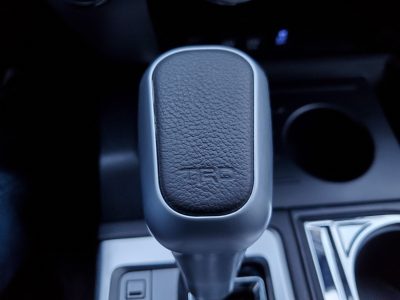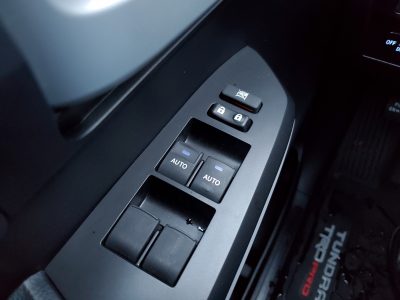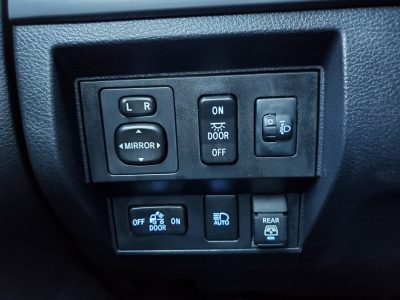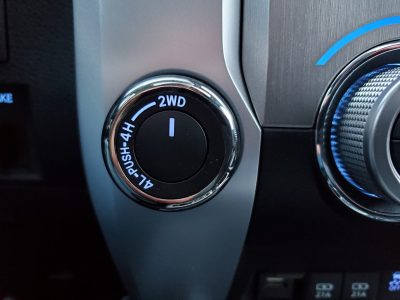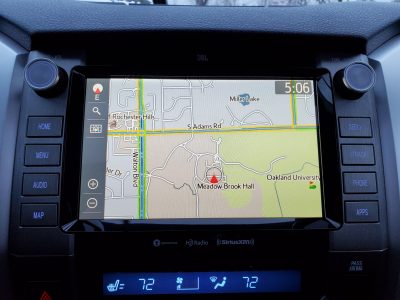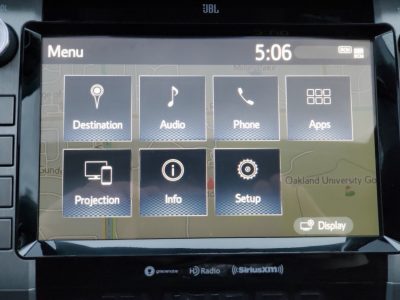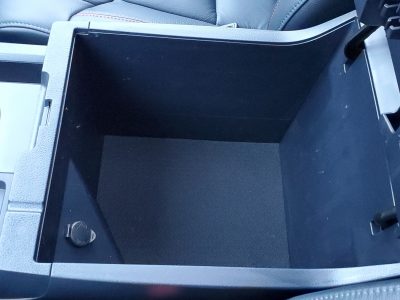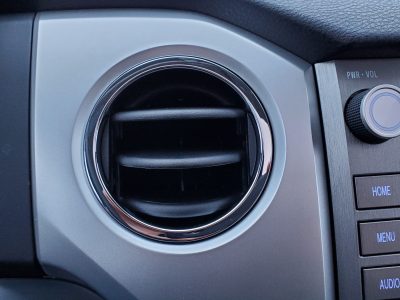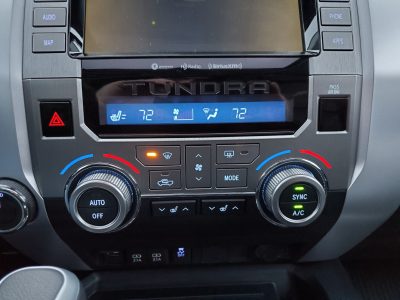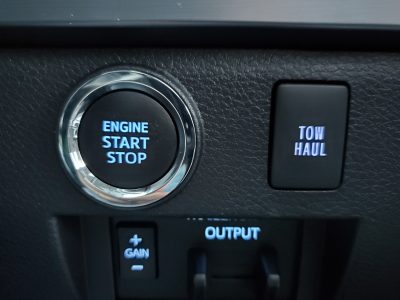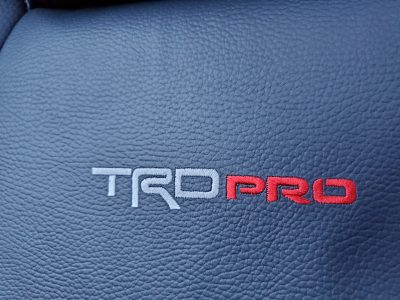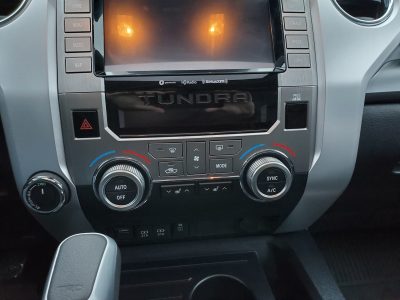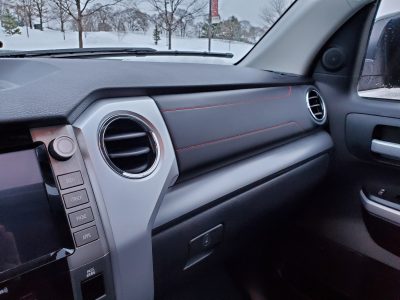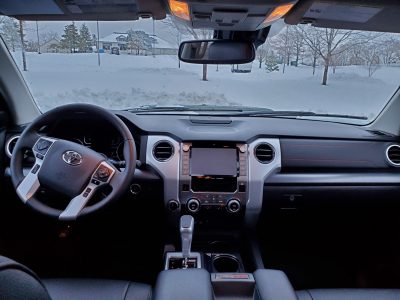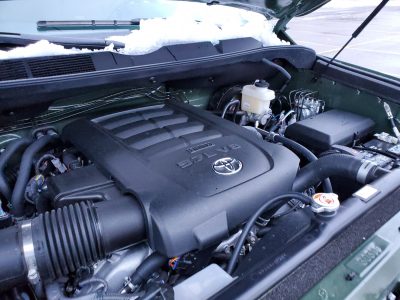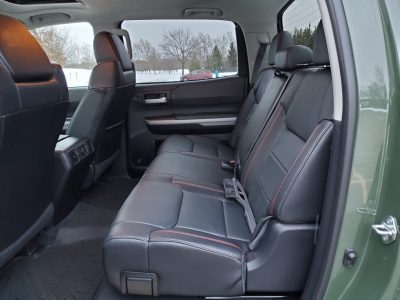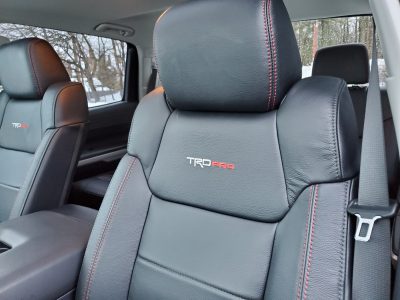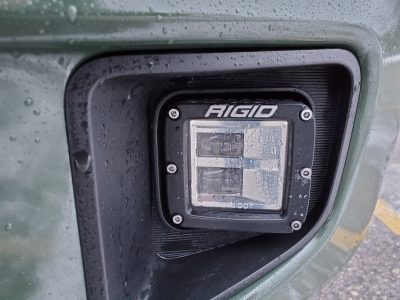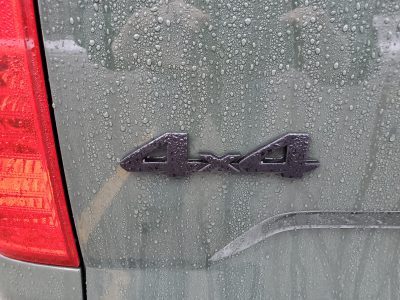When we last met the Toyota Tundra TRD Pro it was in the middle of 2019 where we got acquainted with the truck’s rugged poise, capability, as well as some of the technology that it was missing i.e push button start, Apple CarPlay, and Android Auto. Toyota is keen on keeping the Tundra a very viable threat to the Detroit Big 3’s supremacy in the pickup segment. But can some light cosmetic work and an infusion of new technology play a key role in helping the Tundra be a force to be reckoned with? Or is it still an outsider looking in on the broader sales race?
Familiar Exterior Design Debuts Brand New Hue:
When one is looking for changes, they will not necessarily be apparent on the outside of the truck. The core design here is still virtually identical to the 2019 model, and the design language itself has not received a very comprehensive update in the last few years. However, it still manages to look very burly and muscular, with the front fascia of our TRD Pro example having a bold black colored grille with big TOYOTA lettering across it. This grille helps the TRD stand out from its lesser cousins, and this effect is enhanced when paired with its big hood scoop and the black 18-inch black wheels. The biggest change here is the addition of Army Green into the color palette for 2020. This battle ready hue replaces Voodoo Blue, and is also offered on the rest of the TRD Pro lineup. Here, it toughens up the truck’s visual message, while also being a more welcome canvas for mud and other types of muck versus other hues like white or gray. The black door handles are a welcome contrast to the green hue, and in turn it helps bring a distinctively different style to the truck.
The rest of the changes are minor, and are the equivalent of getting some touch up work done at the local hair salon. The headlights now feature LED accents, and are noticeably brighter at night versus the outgoing units, while minor tweaks to the design help give it a fresher look. Our tester’s tube steps also proved to be a welcome addition, and they earned plenty of praise from Emily, as well as some of the other shorter passengers that we had in the truck during its stay with us.
Interior Technology Shines In Aging Cabin:
When Toyota unveiled the updated Tacoma TRD Pro at the Chicago Auto Show a few years ago, the company revealed that it was committed to bringing its models up to speed in terms of technology and finesse. But while the addition of standard Apple CarPlay, Android Auto, and even Alexa capability are very big steps forward for the brand, all three of these novel technologies can only carry the cabin so far. This is still an aging design, and as a result we wished that Toyota would update the dated instrument cluster, as well as some of the button and switch placement. We do appreciate the bigger 8.0 inch screen, but the cheap plastics that contrast it are a garish reminder of just how badly of an overhaul the cabin needs. Buyers looking for more polish and a bit more luxury in their truck should check out one of the Tundra’s higher trim levels including the range topping 1794 Edition.
But what the cabin lacks in polish and youth, it makes up for it in overall functionality. As mentioned prior, some switches are curiously placed, but the ones that are placed with in the driver’s line of sight are all big and chunky which is a plus for owners that live in snowier climates and need to wear gloves when they are spending time in the Tundra. The center storage console is huge, and it can easily swallow all kinds of things including some laptop computers. The rear seats also offer plenty of room for occupants to stretch out and relax, and even front seat passengers are greeted by big leather thrones and decent amounts of head and leg room. Even the glovebox offers a commendable amount of storage, and we threw everything we had at the Tundra, with our tester easily conquering grocery shopping, and even hauling recyclables for their eventual trek to the bottle deposit room. Visibility was good for the most part, but like other full size trucks, the Tundra has big rear pillars which helps create sizable rear blindspots.
Aging Performance Still Gets The Job Done:
As mentioned in our last encounter with the Tundra TRD Pro, the big Toyota is about as politically incorrect as it gets, with the Tundra not offering a V6 or even a four cylinder. Instead, the familiar and aging 5.7 liter naturally aspirated V8 is still the sole engine choice available. The 381 horsepower on hand is still sufficient enough to help take care of business, but in an age where full size pickups are offering smaller cylinder counts, turbocharging, and even mild-hybrid systems the Tundra comes up noticeably short. The soundtrack that burbles out of the dual cat back exhaust system is a temporary distraction, but we wish Toyota will offer more engine choices to help it claw back some ground from the Detroit Big 3.
This desire also extends to the transmission, with our tester arriving with a six speed automatic transmission. With Chevrolet and Ford offering 10-speed automatics in their rigs (and Ram not far behind with eight cogs) the Tundra’s persistence of embracing the past may not sit well with buyers that want more fuel efficient and modern powertrains especially if they are looking for a truck to serve as a family vehicle. We hope that the next generation Tundra will address these concerns when it eventually makes its appearance.
But look past the age of some of its functional bits, and the Tundra still proves to be a blast when its time to take it down rugged sections of terrain. The Fox sourced internal bypass off-road shocks help soak up holes and divots with ease while the meaty off-road tires still offer copious amounts of grip even in muddier sections of terrain. the suspension also delivers enhanced levels of clearance which allows the Tundra to venture over potent obstacles with the poise and confidence of a billy goat. When it was not being tasked with more traditional off-roading, the Tundra also proved its chops in snow, with a blast of winter weather hitting Metro Detroit shortly after it arrived. Here too, the Tundra proved to be a very capable steed, and it was able to navigate rough unplowed sections of road and neighborhood streets with litle fuss and equally little drama. The metal TRD Pro emblazoned skid plates that are part of the TRD Pro package also help protect sensitive underbody components from damage, especially by rogue rocks or debris.
Back on pavement, the Tundra manages to compose itself very well. Ride quality was good, and the steering was light but not to the point where we were left lacking on feedback and communication. The cabin even retains a commendable degree of silence at freeways speeds, but wind noise on blusterier days does reveal that the Tundra has a long way to go before it can be considered in the same vain as its Lexus stablemates in this regard.
Value Quotient:
Pricing for the 2020 Tundra TRD Pro starts at $48,655 which places it squarely in the middle of the Tundra model family with only the Platinum and the 1794 Edition beating it in this regard. Voodoo Blue was eliminated as a color in 2019, but buyers can still choose from a whole host of colors including White, Magnetic Gray, Midnight Blue Metallic, as well as the Army Green that adorned our test rig. Our lightly adorned tester had a final sticker of $55,020 which is on the higher end of the spectrum for this kind of truck. However, the TRD Pro makes up for it by offering an extra cab and bed configuration which cannot be said for the Platinum and 1794 Edition which force owners into a crew cab and a short bed layout.
When viewed along side its competitors, the TRD’s starting price is on par with other off-road focused entries like the Ram 1500 Rebel and the Silverado Trailboss. But engine flexibility rears its head once again when matched up with the SIlverado which offers two different V8s in TrailBoss spec (one with more power to boot) as well as a V6. That latter engine though is only available on the Custom TrailBoss which also forces customers to sacrifice alot of frills to achieve the same functional result.
Overall the 2020 Toyota Tundra TRD Pro is a much more refined instrument, We like the infusion of technology that the company has made to the truck which works alot better with its mission of being the go to choice for all kinds of off-road adventures. However, when one looks at the borader details, the Tundra still has some room to improve especially in regards to packaging flexibility and pricing. Hopefully, the next generation Tundra will be able to resolve these issues, and ultimately become a much better long term value for truck buyers when it eventually goes on sale in the near future.

Carl Malek has been an automotive journalist for over 10 years. First starting out as a freelance photographer before making the transition to writing during college, his work has appeared on numerous automotive forums as well as websites such as Autoshopper.com.
Carl is also a big fan of British vehicles with the bulk of his devotion going to the Morgan Motor Company as well as offerings from Lotus, MG, and Caterham. When he is not writing about automobiles, Carl enjoys spending time with his family and friends in the Metro Detroit area, as well as spending time with his adorable pets.

